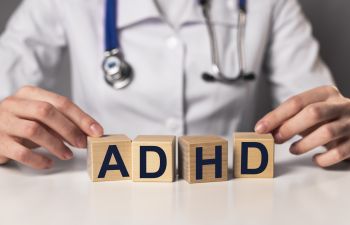Millions of people worldwide suffer from Attention-Deficit/Hyperactivity Disorder (ADHD), a neurodevelopmental disorder. ADHD sufferers frequently struggle with hyperactivity, impulsivity, and attention, which affects many facets of their lives. Even though ADHD can be properly controlled with medication, many people still face major barriers when trying to receive inexpensive treatment. In this piece, we examine the intricacies surrounding the accessibility of ADHD medications, examining the challenges that people encounter and suggesting ways to improve affordability.
Recognizing the Landscape The first-line treatment for ADHD is generally agreed to be medication, specifically stimulants such as amphetamines and methylphenidate. These drugs improve focus, attention, and impulse control by acting on brain neurotransmitters. For people who cannot take stimulants or would prefer alternate therapy, non-stimulant alternatives like atomoxetine and guanfacine provide more possibilities.
Even while ADHD medications are effective, there is still a critical problem with access to inexpensive therapy. There are several elements that make this challenge:
Financial Barriers:
Those without sufficient insurance coverage may find the cost of ADHD medication to be exorbitant. Medication costs can mount up quickly in the absence of support programs or generic alternatives, placing a heavy financial strain on patients and their families.
Limitations on Insurance:
There are many different insurance plans that cover ADHD medication; some have expensive copayments or require prior permission. In addition, those without insurance might find it difficult to pay retail pricing for their medications, which would exacerbate access inequities even further.
Healthcare Inequalities Geographical location and income level are two socioeconomic characteristics that greatly influence access to healthcare services. It is frequently more difficult for members of underprivileged populations to have access to reasonably priced ADHD medication, which exacerbates already-existing differences in diagnosis and treatment.
Misconceptions and Stigma:
People may be discouraged from seeking assistance or following recommended medication regimens due to the stigma associated with ADHD and its treatment. Reluctance to pursue treatment choices is influenced by misconceptions regarding ADHD medication, such as worries of addiction or overmedication.
Taking Care of the Issues
Various stakeholders must be included in a multifaceted approach to enhance access to inexpensive ADHD medicines. Here are a few tactics to think about:
Advocacy and Awareness:
Reducing stigma and encouraging early intervention depend on raising public knowledge of ADHD and its treatment. Campaigns for education that are aimed at the public, educators, and healthcare professionals can help dispel myths and create a more accepting atmosphere for people with ADHD.
Reforming Policies:
In order to reduce healthcare inequities and provide access to reasonably priced medication, policymakers are essential. Laws intended to reduce the cost of prescription drugs, increase insurance coverage, and improve mental health service reimbursement can have a big impact on how affordable and accessible ADHD treatment is.
Extending Assistance Programs:
To aid people in covering the price of their medications, pharmaceutical corporations and charity organizations provide assistance programs. By extending the qualifying requirements and optimizing the application procedures, these programs can be more widely available to individuals who require them.
Encouragement of Generic Alternatives Generally speaking, generic copies of name-brand ADHD drugs are more reasonably priced and just as effective. Promoting generic equivalent prescriptions whenever feasible can help people pay less out of pocket. This can be achieved by healthcare practitioners.
Telemedicine and Telepsychiatry:
In underserved areas in particular, telemedicine has shown itself to be an effective means of expanding access to healthcare services. By using telepsychiatry platforms, people can consult with psychiatrists from a distance, which expedites the diagnosis and prescription of ADHD medication.
Community-Based Support:
Creating networks of support within the community for people with ADHD and their families can be extremely beneficial in terms of resources and help. Advocacy organizations, instructional courses, and peer support groups enable people to find reasonable treatment options and navigate the healthcare system.
Gazing Forward
Policymakers, medical professionals, advocacy organizations, and people with ADHD must work together to remove obstacles to accessible ADHD medication. We can guarantee that all people with ADHD receive the assistance and care they require to thrive by placing a high priority on access, affordability, and equity in the delivery of healthcare.
Long-Term Strategies for Accessing Cheap ADHD Drugs
It’s critical to take into account long-term equality in healthcare delivery and sustainable solutions that address systemic problems as we work to improve access to reasonably priced ADHD medication. Here are some more tactics to support current initiatives:
Finance for Research and Development: The pharmaceutical sector can become more innovative and competitive by allocating funds for the development of new ADHD treatments. Over time, treatment options can be increased and costs can be reduced via government subsidies and incentives for businesses to create new formulations with higher efficacy and tolerance or more cheap generic alternatives.
Models of Integrated Care:
The diagnosis and treatment of ADHD are more easily accessible when primary care settings incorporate mental health services through collaborative care models. Behavioral therapies, psychoeducation, and medication management can all be integrated into normal medical visits to provide patients with ADHD with all-encompassing care tailored to their specific requirements.
Patient education and empowerment:
It is essential for patients to be well-equipped to navigate the healthcare system by providing them with information about ADHD, available treatments, and self-advocacy techniques. Peer mentorship programs, online forums, and educational resources can provide people and their families the means to actively engage in their treatment process, look for cost-effective drug options, and speak up for themselves.
Workplace adjustments and Support:
Employers can provide adjustments and support systems to help employees with ADHD succeed at work by recognizing ADHD as a neurodevelopmental disorder covered by disability rights laws. Reducing the need for excessive medication dosage modifications and promoting productivity can be achieved through the implementation of assistive technologies, ergonomic adjustments, and flexible work schedules.
Community-Based Mental Health Initiatives:
Working together with schools, churches, and community organizations to de-stigmatize ADHD and raise mental health awareness can help create a welcoming and supportive environment. Community-led programs that link people to reasonably priced resources and close access gaps include outreach activities, free mental health exams, and interventions that are culturally appropriate.
International Cooperation and Information Exchange: Realizing that access to reasonably priced medicine is a global problem, international cooperation and the exchange of best practices might hasten the development of just healthcare systems on a global scale. Global mental health equity is prioritized through international partnerships, research networks, and advocacy coalitions that elevate collective voices and support policy improvements.
In summary,
having access to reasonably priced ADHD medication is essential to managing ADHD well. Through the removal of obstacles and the application of focused techniques, we can enable people with ADHD to live happy, productive lives without being limited by untreated symptoms. We must never stop fighting for fair access to mental health care and aiming for a time when no one is denied care because of a lack of resources or structural impediments.












